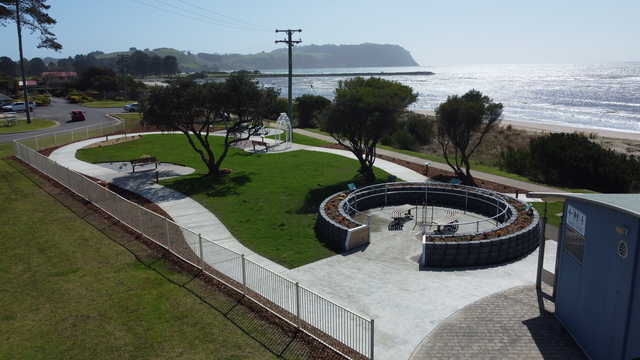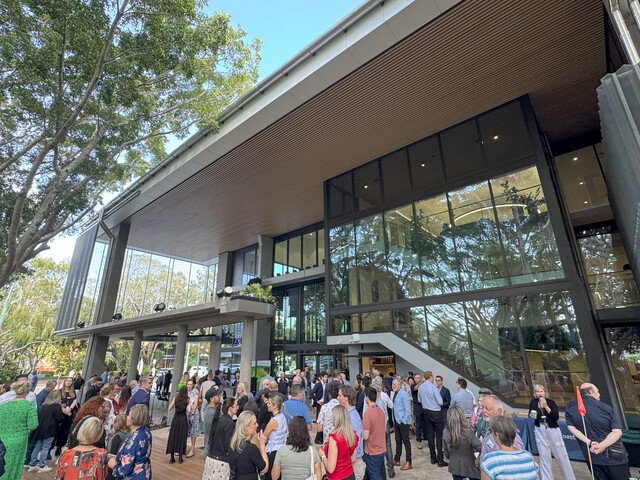The Good Oil by Rod Brown *
I am often asked for advice on how to access funding available within the federal system. My clients have a healthy degree of cynicism about dealing with Canberra, but they realise that the Federal Government cannot be ignored in many areas. But the States are important players too. Alan Wood, Economics Editor of the Australian, wrote an excellent piece last year titled ‘billion dollar business welfare’. It was about government handouts and State bidding wars. To give a feel for the scale and nature of the assistance, I have borrowed some of Alan’s examples, and added a few of my own. The following list of Commonwealth/State assistance is not complete and some of the figures are ballpark estimates because the true figures are not divulged.
Automotive
Holden plant in Victoria – $60 million; Ford 4WD production in Victoria – payroll tax relief and other incentives; Mitsubishi Adelaide – $140 million assistance rumoured.
Aviation
Ansett Mk ll – payroll tax relief; Virgin Airlines in Queensland – $11 million, including payroll tax deductions; Australian Airlines (Qantas’ new Cairns base) – payroll tax breaks, training subsidies.
Engineering/Mining
Collins Class submarines in SA – $50 million in revenue foregone plus cash assistance; Austeel in NSW – $240 million; BHP’s Ravensthorpe Nickel in WA – $18.4 million; Australian Magnesium Corporation (AMC) project in Queensland – $100 million loan guarantee from the Commonwealth, plus State Government assistance; Alice Springs-Darwin rail project – large subsidies from the Commonwealth, SA and NT governments.
IT/telecommunications
Westpac in SA – $16-30 million, Ansett call centre in SA – $1 million; Motorola in SA – $16 million in incentives plus a $60 million radio network contract.
Banking
Bankers Trust in SA – $6 million; JP Morgan Chase Asia-Pacific HQ in NSW – $300k stamp duty rebate, plus payroll tax exemptions; American Express HQ in NSW – $5.5 million.
Tourism/Film/Sports
Perth Convention Centre – $126 million; National Wine Centre for SA – $25 million; Sydney Olympics – $2 billion; Heinekin Golf Classic for Victoria – about $1 million; Fox Studios in Sydney – $109 million.
Other
Orafti chicory plant for Queensland – $19 million; Email consolidation in Adelaide (from Victoria) – amount unknown; Visy pulp/paper mill at Tumut – $40 million incentive package from the Commonwealth.
Now first it must be emphasised that government has a legitimate role in providing industry assistance.
Government agencies in every western nation are active in this area. There are WTO and OECD rules to govern the practice, but the excesses are usually not evident until investigations are mounted when significant trade disputes arise.
When should governments get involved in industry assistance?
The dominant principle is that there must be some form of market failure – that is, the ‘market’ by itself cannot deliver wider strategic benefits, or there is under provision of public goods, a lack of information, coordination failure and so forth. The difficulty lies in defining and measuring strategic benefits, sometimes referred to as the national or public interest. To whom do these benefits apply – to the nation, the state, an industry, a locality?
It is also beholden on government to ensure that the net public benefits exceed the net costs, including revenues foregone – that is, it is not sufficient to have a ‘public benefit’ without qualification. The situation is brought into sharp relief in Australia when State Governments compete for footloose projects, and the respective Ministers and bureaucrats make heroic assumptions to underpin sometimes very shaky cost benefit analyses to justify their intervention.
The Commonwealth’s investment arm, Invest Australia, can become involved, but usually only when there is the prospect of losing an investment to an overseas bidder. There are some dark clouds gathering with the following problem areas.
Lack of strategic intent
Arguably the biggest shortcoming is that the overall picture is one of a series of one off deals. There is no consistency or strategic underpinning of the assistance. As a result, the coordination and integration of expenditure becomes a complexity. Decisions as to who should pay, and in what order, come increasingly to the fore as the private sector moves into the infrastructure field – road, rail, air, sea, telecommunications, education, health and water. The situation is made difficult because the investments being supported come from all directions and sources, and governments or MPs need to be seen to be active supporters of investment projects. Moreover, planning is a dirty word in the minds of some, and where governments are even so bold to actually prioritise areas for investment, they are often accused of ignoring other activities.
Too much company specific assistance
Ten years ago, government assistance was mainly via tariffs, bounties and various agricultural props, and there was only an occasional big play to support GMH, Chrysler, BHP or whoever. With the stripping away of tariff assistance, the focus has shifted to direct financial assistance to compensate.
Too many players
There is now a myriad of players, and from different agencies – everyone is in the job creation and subsidising game. At the Commonwealth level, there are at least seven major departments running programs that provide company specific assistance. And there are three or four departments doing likewise in each state. There tends not to be any one bucket in each department – the funding often lies in small programs and the criteria are generally tight enough to keep the Department of Finance happy, and keep bureaucrats in a job. The complexity of the process is probably a godsend, because if company executives could understand the system, the subsidisation of companies would really be out of hand!
The ‘me-too’ syndrome
This results from the above. When people see companies getting government assistance for what they believe are dubious reasons, they start asking where the queue starts. It is particularly galling when a competitor receives assistance.
Lack of transparency
Government agencies are now rather good at marketing. However there is a lack of explanation in press releases concerning the underpinning logic of decisions on industry assistance. Job creation is an insufficient reason. There is little detail available, and the excuse of commercial confidentiality is often (wrongly) used. To be fair to the bureaucrats, much of the logic would be lost on the industry players, but it is important to build an intellectual base for policy and expenditure decisions.
Rules of the game
What to do? Some rules need to be agreed on, before things get completely out of hand. Here are four suggestions on how the Commonwealth and States might get the ball rolling.
- Better explain decisions on industry assistance, especially how they align with the ‘public interest’.
- Collapse many of the company specific programs – but maintain R&D programs where there is a legitimate public interest.
- Shift the focus on government expenditure onto hard and soft infrastructure, where there is a legitimate public interest and all companies benefit.
- Negotiate an Industry Assistance Agreement to specify where governments should and should not intervene. l Appoint one person to oversight transgressions.
What’s all this got to do with Local Government? Everything – because dollars wasted on subsidising companies could be going to better purposes. And it is at the local level where infrastructure hits the ground. Local Government should theoretically be in the best position to determine how and where infrastructure funding should be spent. Great opportunity for the ALGA to link up with the Commonwealth and take a leadership position on this?
Finally, where industry assistance is deemed necessary, it should only be provided where it benefits a group of collaborating or networked firms, perhaps in the context of some agreed Commonwealth/State strategy for an industry or region. Combined with an emphasis on upgrading infrastructure, it would open up a new era in industry policy.
* Rod Brown’s Canberra based consultancy group, Australian Project Developments Pty Ltd, specialises in industry/regional development and government liaison. For further information telephone (02) 6231 7261 or email apd@orac.net.au







